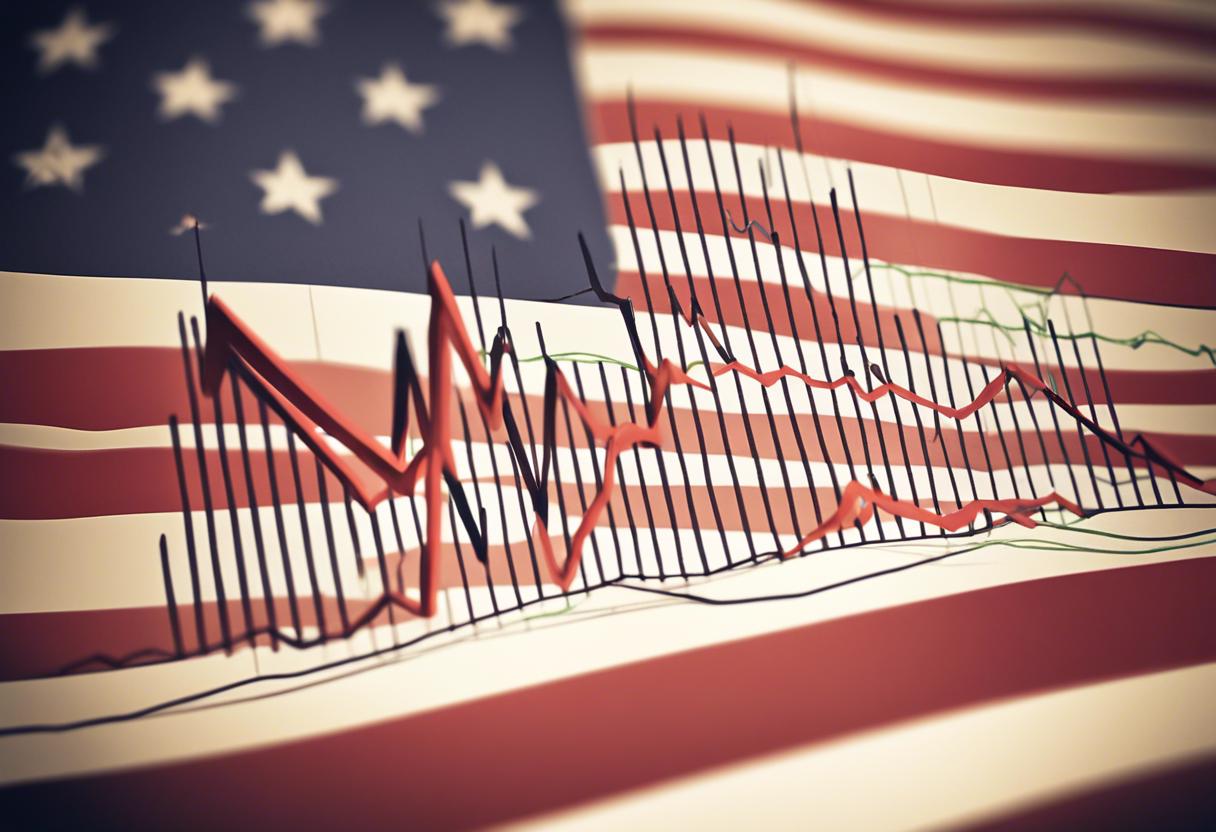The American economy displayed a 2.8% annual growth rate in the second quarter, a testament to continued dependability of consumers, as the Federal Reserve considers the reduction of interest rates in the future. The Bureau of Economic Analysis’ statistics on Thursday outdid the predicted 2% GDP growth for the second quarter, indicating a rise from the 1.4% rate seen in the first quarter. The Federal Reserve is pondering over a reduction in rates, following a spike to a 25-year high of 5.25 to 5.5% as an answer to the inflation surge brought about by the pandemic. According to recent figures, the central bank has been successful in reining in price pressures to its 2% target while avoiding a recession as highlighted by the June consumer price index report, which puts the current US inflation around 3%. Post the data release, the two-year Treasury yield, which is tied to interest rate expectations, displayed a slight increase as traders decreased their bets on interest rate reductions this year. Nevertheless, the markets are still expecting two to three rate reductions by the end of the year.
Notably, Veronica Clark, a Citigroup economist, mentioned that the Federal Reserve would be heartened by the maintained strong demand from the first quarter. However, she did caution that recent monthly data showed consumer spending was slowing with potentially worrying indicators evident in labour market data. Echoing this sentiment, ING’s chief international economist, James Knightley views this as a notable recovery following the sluggish performance of the first quarter, however, believes the economy is facing growing pressures. Both Clark and Knightley anticipate a rate cut from the Fed in September.
Data released on Thursday demonstrated a 2.6% increase in the ‘final services to private domestic purchasers’ – a key indicator of demand when excluding inventories, trade, and government spending. This was consistent with the previous quarter. Consumer spending also rose, showing a 2.3% increase, a step up from the 1.5% pace of the first quarter.
Despite demonstrating a robust performance in Q2, early indications this month hint at the gradual weakening of the labour market, strengthening the argument for an immediate reduction in interest rates. TS Lombard’s principal American economist, Steven Blitz, cautioned that a recession could materialise later in the year if the Federal Reserve fails to execute an interest rate cut promptly.
As part of the preparatory measures for lowering the rates as early as the September meeting, Jay Powell, the chair of the Fed, noted last week that the last three monthly inflation numbers demonstrated an admirable rate of price growth. The Fed asserts that there remains a trajectory towards a ‘soft landing,’ where inflation reverts to its target without catalysing a swell in job redundancies. Even though there has been a rise in job cuts nudging the unemployment rate over 4%, this figure still resides at a historically low level.
The information affirms the US’s position as a frontrunner among developed economies, anticipated to grow at 1.7% in 2024 according to predictions released by the IMF last week. This predicted growth is slower than the 3.2% rate envisioned globally.
The US President, Joe Biden, stated on Thursday that the recent GDP report “clearly establishes our current standing as the world’s strongest economy”. He added, “We have created nearly 16 million jobs, wages have increased, and inflation is decreasing”.
The Treasury Secretary, Janet Yellen, reinforced this at the G20 summit in Brazil, declaring that the disseminated data signifies that the US is pursuing a path of “consistent growth and reducing inflation”. This material belongs to The Financial Times Limited 2024.

